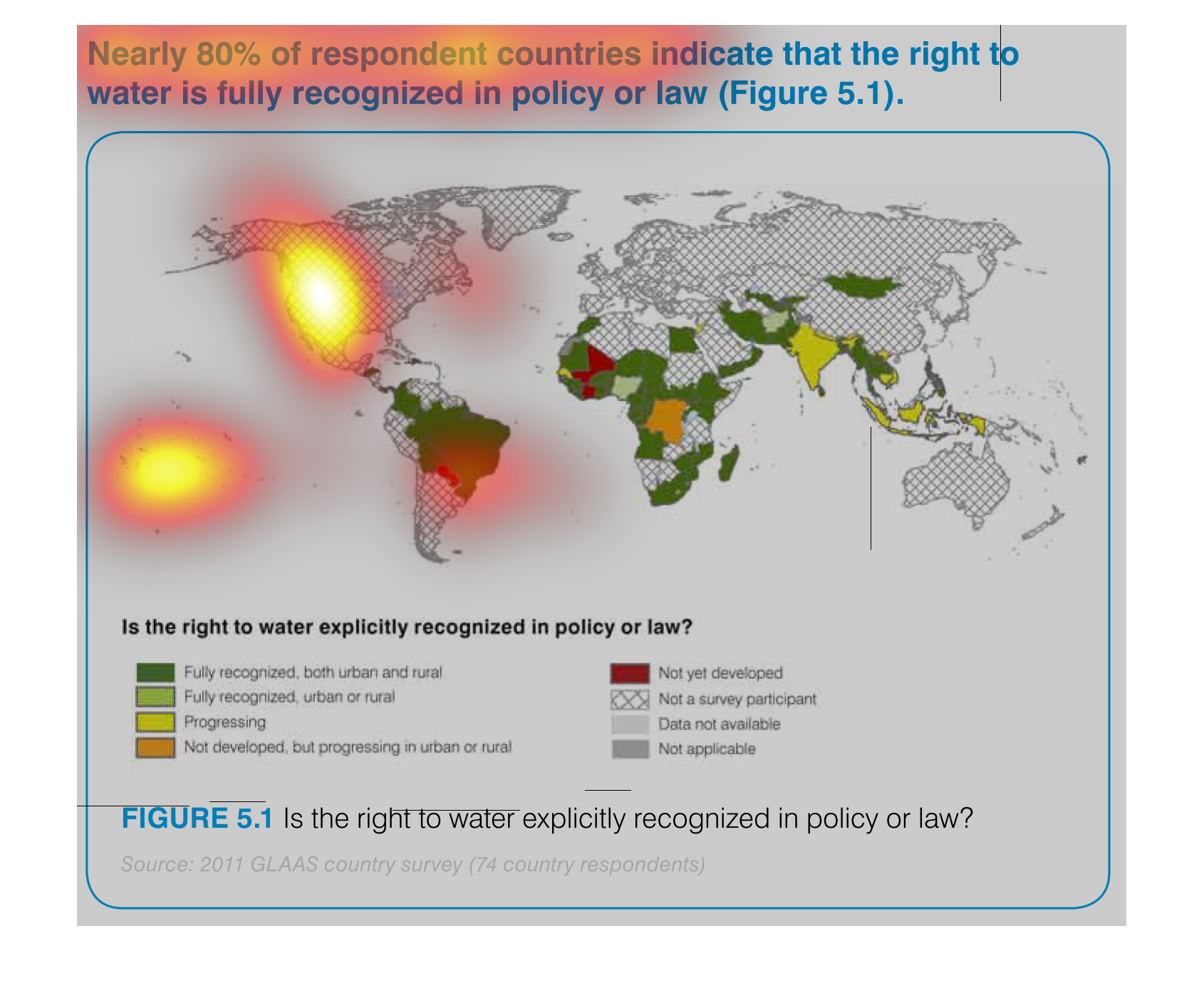
This chart describes nearly 80% of respondent countries indicate that the right to water is
fully recognized in policy or law. Different categories on the chart are represented by different
colors.


This handmade chart shows that certain countries have the right to clean and sanitary water
as a fundamental right. It is mostly in south america and africa


nearly 80% of respondent countries indicate the the right to water is fully recognized in
policy or law figure 5.1 mostly underdeveloped countries surveyed


This graph shows compares countries of the world and asks which countries have laws or policies
that explicitly give its residents the right to water. Multiple countries in Africa, as well
as Brazil and Colombia in South America and several countries in Asia, fully recognize this
right. At the same time, many countries in Asia, such as India, are progressing in their
policies. Though many African countries have laws or policies, there are also several that
have not yet developed these policies.


The following chart shows that nearly 80% of all countries recognize indicated that the right
to water is fully recongnized in policy or law. However All of North America, Euope, China
and Russia where not participants in the survey.


Is the right to water explicitly recognized in policy or law? This chart shows that information
for some countries, whether fully recognized, both urban and rural or no data, not developed,
progressing. Data is available for South America and Africa indicating that in a majority
of the measured region of South America the right to water is recognized with small pockets
to the south where it is not. Africa indicates a broader range, including from no support
to partial and full support for explicit recognition of water rights in policy or law.


The image on the left hand side shows a continent view of the world and shows a color coordinated
representation of where laws or rules have been enacted on water. These countries are what
an individual may expect, in Africa, South America for the mots part and parts of South Asia.


This image shows or depicts in Worldwide Geographical statistical format that nearly 80% of
respondent countries indicate the the right to is fully recognized in policy or law.


The figure presented is titled Nearly 80% of respondent countries indicate that the right
to water is fully recognized in policy or law. It shows the countries who indicate the right
to water.


This is a global map of countries where clean drinking water is a government assured right.
80 percent of respondent countries reported that they guarantee their citizens clean drinking
water.


This is a color coded map representing the right to water whether by law or policy by surveyed
countries. The key at the bottom explains what each color signifies. the dark hreen color
symbolizes fully recognized water rights, both urban and rural, whereas light green sybolizes
either urban or rural. Yellow indicates the water rights are progressing, while orange indicates
water rights are not devbeloped by are progressing rural or urban areas. The red indicates
countries where water rights are not developed. Three different gray marking exist to delineate
either not a survey participant, no data available, or not applicable. The map is headed
by the claim that nearly 80% of respondent countries have fully recognized water rights.


This is a global heat map that illustrates whether the right to water is recognized by national
policy. It shows those areas or regions that are fully recognized.


This chart describes that nearly 80% of respondent countries indicate that the right to water
is fully recognized in policy or law. Different categories are represented by different colors.


Figure 5.1 shows that among the respondent countries, nearly 80% have claimed that the right
to water is fully given in policy or law. The dark green ares on the map graph show fully
recognized in both urban and rural areas.






























